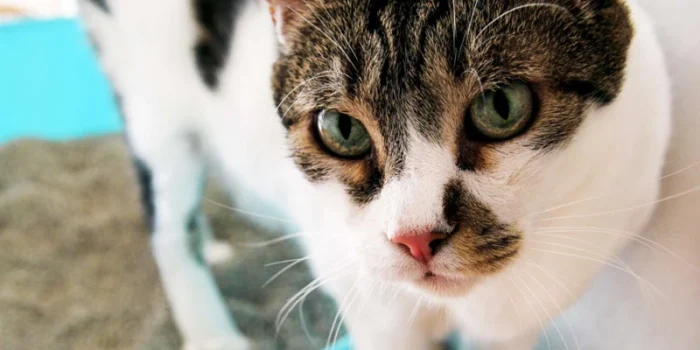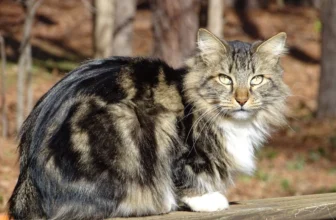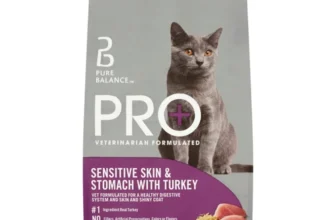As fur-parents, we love our American Bobtail cats and always want to make sure they are healthy and happy. However, it can be concerning and confusing when our beloved feline companions start showing signs of discomfort, particularly when it comes to their urinary health. Urinary tract infections (UTIs) are common in American Bobtail cats, and if left untreated, they can lead to serious health issues. In this comprehensive guide, we will explore the signs and symptoms of UTIs in American Bobtail cats, as well as discuss various treatment options and preventative measures you can take to keep your furry friend healthy and thriving. Let’s dive in!
What is a Urinary Tract Infection?
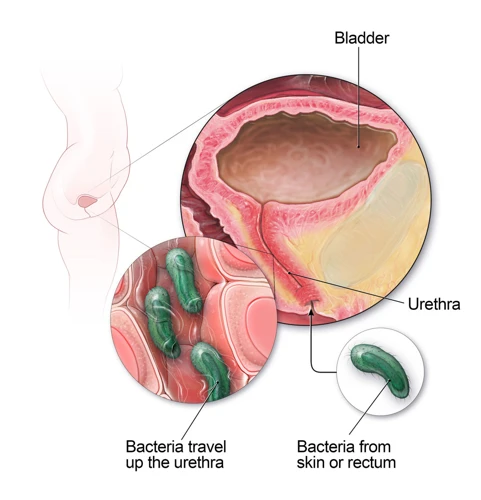
Have you ever noticed your American Bobtail cat having difficulty or discomfort while urinating? This may be a sign of a urinary tract infection (UTI), a common condition that affects cats of all breeds and ages. UTIs occur when bacteria enter the urinary tract and cause inflammation or infection. If left untreated, UTIs can lead to more serious health problems, which is why it’s important to recognize the signs and seek treatment promptly. In this section, we’ll discuss the definition, causes, and risk factors of UTIs in American Bobtail cats. To learn more about UTIs, visit our article on Understanding UTI in American Bobtail Cats.
Definition of a UTI
A Urinary Tract Infection or UTI occurs when bacteria enter the urinary system and start to multiply. This infection can affect any part of the urinary system, including the bladder, urethra, or kidneys. UTIs are common in cats, including American Bobtail Cats. UTIs can be uncomfortable and even painful for cats and, if left untreated, can lead to more severe health issues.
So, how do cats get UTIs?
UTIs can happen due to a variety of reasons, including bacterial infections, bladder stones, and tumor growth. However, bacterial infections are a more common cause of UTIs in American Bobtail Cats.
To minimize the risk of UTIs in American Bobtail Cats, it is crucial to understand the factors that lead to their development. Some of the most common risk factors for developing a UTI include:
| Risk Factors: | Description: |
|---|---|
| Age: | Elderly cats are more prone to infections due to weakened immune systems. |
| Gender: | Both male and female cats can develop a UTI. However, females are more prone to UTIs due to their shorter urethra. |
| Diet: | Cats fed a low-quality diet may be at higher risk for developing UTIs. |
| Weight: | Being overweight or obese can increase the risk of developing UTIs in cats. |
| Hygiene: | Dirty litter boxes or poor hygiene can lead to an increased risk of UTIs in cats. |
| Genetics: | Certain breeds, such as American Bobtail Cats, may be more prone to UTIs. |
It is crucial to monitor American Bobtail Cats and look for the common signs and symptoms of UTIs. By identifying and treating UTIs early, you can prevent more severe health problems from occurring in your beloved pet.
If you want to learn more about the diagnosis and treatment of UTIs in American Bobtail Cats or ways to prevent UTIs, check out our articles on Diagnosis and Treatment of UTIs in American Bobtail Cats and Prevention of UTIs in American Bobtail Cats.
Causes of UTIs in American Bobtail Cats
Urinary tract infections in American Bobtail cats can be caused by a variety of factors. Understanding these causes is important when it comes to preventing UTIs and reducing the likelihood of recurrence. Some of the causes of UTIs in American Bobtail cats are:
| Cause | Description |
|---|---|
| Bacteria | UTIs in cats are often caused by bacteria such as E. coli, which can enter the urinary tract through the urethra and cause infection. |
| Poor Hygiene | Dirty litter boxes, unclean fur, and poor grooming habits can all contribute to the development of UTIs in American Bobtail cats. |
| Urinary Tract Abnormalities | Cats with anatomical abnormalities such as a narrowed urethra or bladder stones are more prone to developing UTIs. |
| Dehydration | A lack of water in the diet can lead to concentrated urine, which is more likely to contain bacteria and cause infection. |
| Underlying Medical Conditions | Conditions such as diabetes, kidney disease, and feline leukemia can make cats more susceptible to developing UTIs. |
Additionally, female American Bobtail cats are more prone to developing UTIs due to their shorter urethras which make it easier for bacteria to travel up to the bladder.
It’s important to note that while some of these causes may be out of our control, there are still steps we can take to prevent UTIs in our American Bobtail cats. By maintaining proper hygiene, ensuring our cats stay hydrated, and seeking prompt veterinary care when necessary, we can help keep our furry friends healthy and happy. If you want to learn more about why UTIs are so common in American Bobtail cats, check out our article on UTIs in Bobtail Cats.
Risk Factors for UTIs in American Bobtail Cats
While urinary tract infections can affect any American Bobtail cat, some are at a higher risk than others. Here are some risk factors that can increase the likelihood of a UTI in an American Bobtail cat:
- Gender: Female American Bobtail cats are more prone to UTIs than males, mainly due to their shorter urethras.
- Age: Age can also play a role in increasing the likelihood of a UTI. Older cats, as well as young kittens, are particularly vulnerable.
- Diet: An American Bobtail cat’s diet can also affect their susceptibility to UTIs. Cats that consume a diet that lacks proper nutrients and hydration can experience urinary tract problems.
- Medical history: American Bobtail cats with a history of urinary tract infections are more likely to experience recurring infections in the future.
- Obesity: Overweight American Bobtail cats may be more susceptible to UTIs due to their tendency to have difficulty with proper grooming and cleaning themselves.
- Genetics: Some American Bobtail cats may inherit a predisposition to UTIs or other urinary tract problems.
- Stress: Stress can also impact a cat’s immune system and make them more vulnerable to infections.
It is important for American Bobtail cat owners to keep these risk factors in mind and take preventative measures to reduce the chances of their cat developing a UTI.
Common Signs and Symptoms of UTIs in American Bobtail Cats
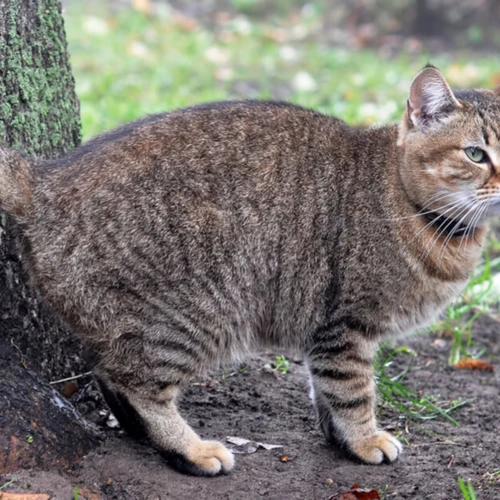
As a cat owner, it’s important to keep an eye out for any changes in your American Bobtail’s behavior, especially when it comes to their bathroom habits. A UTI, or urinary tract infection, can cause discomfort and pain for your furry friend. In this section, we will discuss the common signs and symptoms of UTIs in American Bobtail cats that you should be aware of in order to keep your cat healthy and happy.
Litter Box Issues
Litter box issues are one of the most common signs that your American Bobtail cat might be suffering from a urinary tract infection. Below are some behaviors to look out for:
- Urinating outside the litter box
- Spending prolonged periods of time in the litter box
- Crying or vocalizing while in the litter box
- Appearing to strain while trying to urinate
- Exhibiting discomfort while trying to urinate
If your cat is experiencing any of these behaviors, it is recommended to take them to a veterinarian to check for a UTI. Leaving a UTI untreated can lead to further complications such as kidney damage, which can be fatal in some cases.
It is important to note that not all litter box issues are caused by UTIs. Other health concerns or behavioral issues could be the root cause. It is advisable to seek professional help and guidance to accurately diagnose any potential health problems your cat may be experiencing.
Pain or Discomfort while Urinating
One of the most common signs of a urinary tract infection in American Bobtail cats is experiencing pain or discomfort while urinating, also known as dysuria. Cats who are straining to urinate or who vocalize while urinating are also exhibiting signs of dysuria. This can be a very uncomfortable and even painful experience for the cat, causing them to associate the litter box with discomfort or even fear.
It is important to note that dysuria can also be indicative of other conditions such as bladder stones or a urinary blockage, so it is important to seek veterinary care if your cat is exhibiting this symptom.
Other signs that your American Bobtail cat is experiencing pain or discomfort while urinating include:
- Posturing for long periods in the litter box
- Going in and out of the litter box frequently
- Not producing much urine or producing only small amounts
If you notice that your American Bobtail cat is exhibiting any of these symptoms, it is important to seek veterinary care as soon as possible. Uncomfortable urination can quickly become a urinary blockage in cats, which can quickly become a life-threatening emergency.
If your cat is diagnosed with a urinary tract infection, your veterinarian will likely prescribe antibiotics to help clear up the infection and reduce inflammation and discomfort. Additionally, increasing your cat’s fluid intake, providing urinary acidifiers, and providing pain management can also help your cat feel better while they are recovering from their infection.
Remember, early intervention is key to successfully treating a urinary tract infection in your American Bobtail cat, so be sure to monitor their litter box habits closely and seek veterinary care if you notice any signs of discomfort or dysuria.
Frequent Urination
Frequent urination is one of the most common signs of Urinary Tract Infections (UTIs) in American Bobtail cats. If you notice that your cat suddenly needs to use the litter box more often than usual, it may be a sign of a urinary tract infection.
Symptoms of frequent urination can include:
- Incontinence: Accidents outside of the litter box may occur in cats with UTIs.
- Painful Urination: Cats may show signs of discomfort, crying out, or straining while trying to urinate.
- Licking of Genital Area: Cats may excessively groom their genital area, indicating discomfort or irritation in that region.
- Small Urination Amounts: Cats with UTIs may only release small amounts of urine during each trip to the litter box.
- Increased Thirst: In response to frequent urination, cats may drink more water than usual, causing increased thirst.
Frequent urination is caused by inflammation and irritation within the bladder and urethra, which can cause a strong urge to urinate. This is typically caused by bacterial infections. However, other underlying conditions such as bladder stones or tumors can also lead to increased urination habits in cats.
If you notice any of these symptoms, it is important to take your cat to a veterinarian right away. Your veterinarian can help determine if the frequent urination is caused by a UTI or another underlying condition, and provide appropriate treatment to relieve your cat’s discomfort.
Blood in Urine
Blood in urine, also known as hematuria, is another common symptom of urinary tract infections in American Bobtail cats. When a cat has a UTI, their urine may appear pink, red, or brown in color due to the presence of blood.
Causes of Blood in Urine
The presence of blood in a cat’s urine is the result of inflammation within the urinary tract. This inflammation can be caused by an infection or other medical conditions such as bladder stones or tumors. In rare cases, blood in the urine can also be a sign of a more serious condition such as feline leukemia or kidney disease.
Signs and Symptoms of Blood in Urine
Aside from the obvious discoloration of the urine, there are other signs and symptoms that a cat may display when blood is present in their urine. These can include:
- Increased frequency of urination
- Pain or discomfort while urinating
- Licking at their genitals
- Straining to urinate
- Loss of appetite
When to Seek Veterinary Care
If you notice blood in your American Bobtail’s urine, it is important to seek veterinary care as soon as possible. Your veterinarian will be able to determine the underlying cause of the hematuria and provide appropriate treatment.
Treatment for Blood in Urine
Treatment for blood in a cat’s urine will depend on the underlying cause of the hematuria. In cases of UTIs, antibiotics will typically be prescribed to clear the infection. If bladder stones are the culprit, surgery may be necessary to remove them. In more serious cases, additional medical treatment may be required.
Summary Table: Blood in Urine in American Bobtail Cats
| Causes | Signs and Symptoms | When to Seek Veterinary Care | Treatment |
|---|---|---|---|
| Inflammation within the urinary tract due to infection, bladder stones, or tumors | Discolored urine, increased frequency of urination, licking at genitals, pain or discomfort while urinating, straining to urinate, loss of appetite | As soon as blood is noticed in urine | Treatment varies depending on underlying cause; antibiotics for UTIs, surgery for bladder stones |
Blood in urine is a common symptom of UTIs in American Bobtail cats that should not be ignored. Proper veterinary care and treatment is necessary to determine and address the underlying cause of hematuria.
Excessive Grooming
One of the less commonly known signs of urinary tract infection (UTI) in American Bobtail cats is excessive grooming. This is when your cat is grooming themselves more than usual, often to the point of obsessively licking their urinary area.
Excessive grooming is a sign that your cat may be experiencing discomfort or pain in that area, which can be caused by a UTI. Unfortunately, if left untreated, excessive grooming can lead to hair loss, skin irritation, and even infection.
If you notice your cat excessively grooming their urinary area, it’s important to observe their behavior and look for other signs of a UTI. This includes litter box issues, pain or discomfort while urinating, frequent urination, and blood in the urine.
If you suspect a UTI or notice your cat grooming excessively, it’s important to seek veterinary care immediately. Your vet may perform a physical exam and medical history, as well as a urinalysis and urine culture, to confirm the diagnosis.
Excessive Grooming Check-List:
- Your cat is grooming themselves more than usual
- Licking their urinary area obsessively
- May experience discomfort or pain in that area due to UTI
- Can lead to hair loss, skin irritation, and infection
- Seek veterinary care immediately if you suspect a UTI or excessive grooming
Remember, while excessive grooming may not always be a sign of UTI in American Bobtail cats, it’s important to take note of any changes in behavior and seek veterinary care if necessary. Early detection and treatment can prevent further complications from occurring.
Lethargy or Irritability
It is not uncommon for American Bobtail cats who are experiencing a urinary tract infection to become lethargic or irritable. These behaviors can be a result of the physical discomfort that comes along with a UTI, but they can also be caused by the infection itself.
Lethargy: If you notice a decrease in your cat’s activity level, it could be a sign of lethargy. Lethargic cats may sleep more than usual, seem uninterested in playing or interacting with you, and may even seem uninterested in food. They may also appear weaker or have difficulty jumping up onto furniture.
Irritability: UTIs can cause pain and discomfort which may make your cat irritable. If you notice your cat hissing or growling when touched, or if they become more aggressive than usual, it could be a sign that they are experiencing discomfort.
If you notice lethargy or irritability in your American Bobtail cat, it is important to take them to the vet for a checkup. These behaviors may not necessarily mean that your cat has a UTI, but it is always better to be safe than sorry.
In addition to lethargy and irritability, the following table outlines some additional signs and symptoms that may indicate your cat has a UTI.
| Signs and Symptoms | Description |
|---|---|
| Litter Box Issues | Changes in litter box habits or urinating outside the box |
| Pain or Discomfort while Urinating | Vocalizing while urinating or frequent trips to the litter box |
| Frequent Urination | Urinating more often than usual or passing only a small amount of urine |
| Blood in Urine | Discoloration or visible blood in urine |
| Excessive Grooming | Over-grooming of the genital area or licking at the urethral opening |
If you notice any of these signs and symptoms in your American Bobtail cat, it is important to schedule a vet appointment as soon as possible. UTIs can be painful and uncomfortable for your furry friend, and early treatment is key to a full recovery.
Diagnosing UTIs in American Bobtail Cats
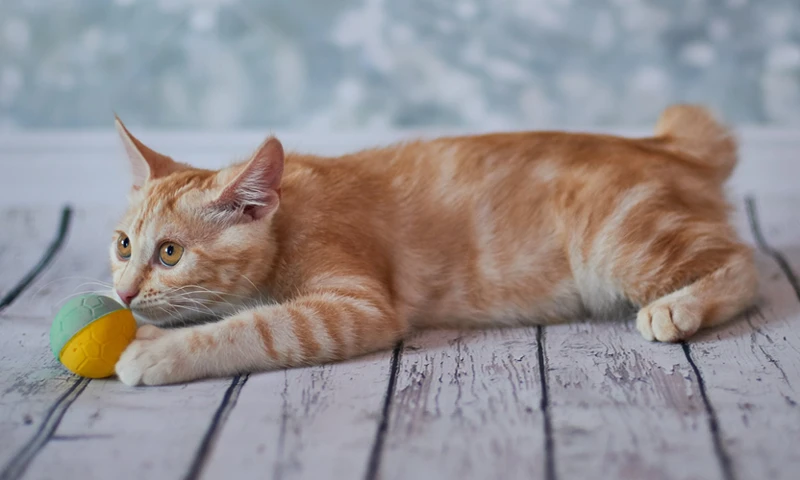
When a beloved American Bobtail cat is exhibiting symptoms of a urinary tract infection (UTI), it can be distressing for both the pet and owner. It is important to promptly diagnose and treat UTIs to prevent further complications. Diagnosing a UTI in an American Bobtail cat can be a perplexing process, but there are several steps that veterinarians can take to accurately identify the issue. Below, we highlight some of the methods used for diagnosing UTIs in American Bobtail cats.
Physical Exam and Medical History
During a physical exam and medical history assessment, your veterinarian will gather important information about your American Bobtail cat’s health status. This may include asking you questions about your cat’s diet, behavior, and previous health problems. Additionally, your veterinarian will conduct a physical examination to check for any abnormalities or signs of infection in the genital or urinary tract areas.
Your veterinarian will palpate your American Bobtail cat’s abdomen to check for any discomfort or swelling in the bladder or urethral region. They may also take note of the cat’s posture during urination, which can provide clues about urinary tract health. If your cat exhibits pain or discomfort when palpated, this could be a sign of UTI.
Other important indicators of UTI in cats during a physical exam may include:
- A lowered body temperature indicating fever
- Dehydration due to inadequate fluid consumption
- Inflammation or redness around the genital area
- Abdominal tenderness during palpation
These indicators are not always definitive of a UTI, but they can help your veterinarian determine the next steps in diagnosis and treatment. In some cases, further testing in the form of a urinalysis or urine culture may be needed to confirm a diagnosis of UTI.
It’s important to note that UTIs can be a recurring problem in some cats, and underlying health conditions or lifestyle factors may contribute to their likelihood of developing them. By staying vigilant about your cat’s symptoms and seeking veterinary care promptly when necessary, you can help keep your American Bobtail cat healthy and comfortable.
Urinalysis
During the diagnostic process for a urinary tract infection (UTI) in an American Bobtail cat, one of the most essential diagnostic tests is a urinalysis. This test provides a comprehensive overview of the urine and can help identify any abnormalities or markers that may indicate infection.
The urinalysis process involves several steps, including a physical examination of the urine, observation for any visible changes, and the use of specialized equipment to measure the concentration of different substances in the urine. The results of a urinalysis will often include details such as color, pH level, specific gravity, and the presence of any blood, protein, or bacteria in the urine.
Color: The color of the urine can provide important clues about the cat’s overall health. In healthy cats, urine is typically yellow or straw-colored. However, if there is an infection present, the color may appear cloudy or discolored, which can indicate the presence of bacteria, protein, or blood in the urine.
pH Level: The pH level of the urine can also provide valuable information about the cat’s health. Typically, the pH balance of a cat’s urine is slightly acidic, which makes it more difficult for bacteria to grow. However, if the pH level is too high or too low, this can be an indicator of infection or other health complications.
Specific Gravity: The specific gravity of the urine measures the concentration of various substances in the urine. In healthy cats, the specific gravity should be within a certain range, typically between 1.020 and 1.040. However, if the concentration is too high or too low, this can be an indication of dehydration or other health problems.
Blood in Urine: One of the most common signs of a UTI in American Bobtail cats is the presence of blood in the urine. During a urinalysis, the vet will be able to detect the presence of red blood cells in the urine through a microscopic examination.
Protein: Presence of protein in the urine can also be an indication of a UTI. During a urinalysis, vet will check the protein levels which indicate the presence of infection.
A urinalysis is an essential diagnostic tool for detecting and diagnosing UTIs in American Bobtail cats. If you suspect your cat may have a UTI, it is important to seek veterinary care promptly to ensure proper diagnosis and treatment. Here we presented only a few details that can be detected during the urinalysis.
Urine Culture
A urine culture is a diagnostic test that can be performed by a veterinarian to identify the specific bacteria causing your American Bobtail cat’s urinary tract infection (UTI). This test is especially important if the initial treatments, such as antibiotics and increased fluid intake, have not been effective.
Here are the steps involved in a urine culture:
- Urinalysis: Before performing the culture, the veterinarian will first perform a urinalysis to check for the presence of any crystals, red blood cells, white blood cells, or bacteria. This helps to confirm that a UTI is indeed present.
- Collection of urine sample: The veterinarian will then collect a urine sample from your cat using a sterile technique.
- Growing the culture: The urine sample is then placed in a sterile environment to allow any bacteria present to grow over a period of time. This can take up to 48 hours.
- Identifying the bacteria: Once the bacteria have grown, the veterinarian will be able to identify the type of bacteria causing the UTI. This is important because different types of bacteria may require different treatments.
- Selecting the appropriate antibiotic: Based on the results of the urine culture, the veterinarian will be able to select the appropriate antibiotic to treat the UTI.
It is important to note that a urine culture can be more expensive than other diagnostic tests, but it can also be more effective in treating the UTI. If your cat’s UTI is not responding well to initial treatments, or if it is a recurring issue, a urine culture may be recommended to properly identify and treat the specific type of bacteria causing the infection.
Treatment Options for UTIs in American Bobtail Cats

As much as we adore our American Bobtail cats, we can’t ignore the fact that they can suffer from Urinary Tract Infections (UTIs). When UTIs occur, it’s crucial to take quick action to prevent further complications. Thankfully, there are various treatment options available to help alleviate symptoms and cure UTIs in your feline friend. In this section of the article, we’ll take a closer look at the methods that can help empower American Bobtail cats to bounce back to optimal health.
Antibiotics
When it comes to treating urinary tract infections (UTIs) in American Bobtail cats, antibiotics are a common and effective treatment option. Antibiotics work by killing the bacteria causing the infection and can provide relief for your furry friend fairly quickly. However, it’s important to note that not all antibiotics are created equal, and your veterinarian will need to carefully select the appropriate one based on the severity of the infection, as well as other factors unique to your cat.
Here are a few common antibiotics used to treat UTIs in American Bobtail cats:
- Amoxicillin: This is a popular choice because it is both effective and affordable. Amoxicillin is often given orally in the form of a tablet or liquid. However, some cats may be allergic to this antibiotic, so it’s important to watch for signs of an allergic reaction, such as difficulty breathing or swelling.
- Cephalexin: This antibiotic is similar to amoxicillin and is often used in cats with moderate to severe UTIs. Cephalexin is generally administered orally and is known to work quickly to relieve symptoms.
- Enrofloxacin: This antibiotic is stronger than amoxicillin or cephalexin and is used to treat more severe infections. Enrofloxacin is often given as an injectable medication to ensure that it reaches the bloodstream quickly.
- Trimethoprim-sulfamethoxazole: This antibiotic is commonly known as “TMP-SMX” or “Bactrim”. It is effective in treating various bacterial infections including UTIs. This medication can be administered orally but sometimes can cause mild gastrointestinal side effects like vomiting or diarrhea.
It’s essential to follow the prescribed dosage and duration of antibiotics given by your veterinarian. This is because stopping treatment early or giving a lower dosage can contribute to the development of antibiotic-resistant bacteria, which can make treating future infections more difficult. Additionally, the use of antibiotics can have potential side effects, such as diarrhea or loss of appetite, so it’s essential to monitor your cat closely while they are taking medication.
Increased Fluid Intake
One way to help treat UTIs in American Bobtail cats is to increase their fluid intake. By doing so, it helps flush out bacteria and reduce the chances of them sticking to the bladder walls. Increasing their fluid intake can also help them urinate more frequently and empty their bladders more completely, which can also aid in the removal of bacteria. Here are some great ways to encourage your American Bobtail to drink more water:
- Water Fountains: American Bobtails love to drink from moving water sources, like fountains or faucets. Consider investing in a water fountain for your cat to increase their water intake.
- Bowls in Multiple Locations: By placing water bowls in several locations around your house, you are giving your American Bobtail more opportunities to drink water. Try to keep the bowls in quiet areas away from their litter boxes and food bowls.
- Wet Cat Food: Feeding your American Bobtail wet cat food can increase their overall fluid intake because the food contains moisture. This is particularly helpful for cats who do not drink enough water on their own.
- Add Water to Dry Food: If your American Bobtail prefers dry food over wet food, try adding water to their meals. This will boost their fluid intake without changing their diet.
- Ice Cubes: Some cats enjoy playing with ice cubes in their water bowl. Not only does it encourage drinking, but it’s also a fun activity for them.
- Clean Bowls: Make sure to clean your cat’s water bowl regularly to keep it fresh and appealing. Dirty bowls can deter cats from drinking water.
Remember, increased fluid intake is just one component of treating and preventing UTIs in American Bobtail cats. It is important to work with your veterinarian to determine the best course of treatment for your cat’s specific needs.
Pain Management
When a cat is suffering from a urinary tract infection, they may experience pain or discomfort during urination. Pain management is an important aspect of treating a UTI in American Bobtail Cats. There are various ways to alleviate pain and make the cat more comfortable during the healing process. Here are some common pain management options:
| Treatment | Description |
|---|---|
| Nonsteroidal anti-inflammatory drugs (NSAIDs) | NSAIDs like Rimadyl, Metacam, or Onsior can be used to reduce pain and inflammation. However, these should be used with caution and veterinary supervision as they can have potential side effects like gastrointestinal issues and kidney damage. |
| Opioids | Opioids like buprenorphine or tramadol can be used for more severe pain. These medications should be used under the guidance of a vet and with close monitoring as they can cause sedation and respiratory distress. |
| Local anesthetics | Topical lidocaine can be applied to the vulva or penile area to reduce pain during urination. This option should be discussed with a vet before administering. |
| Anti-anxiety medication | In some cases, anti-anxiety medication like amitriptyline or clomipramine may be used to alleviate pain-related anxiety and discomfort. These should be used under careful veterinary supervision. |
Pain management should be tailored to each individual cat and their specific needs. It is important to consult with a veterinarian before starting any pain management medications and to closely monitor the cat’s reaction to the medication. In addition to medication, providing a comfortable and stress-free environment for the cat can also aid in pain management. This includes quiet and cozy spaces for resting, access to clean drinking water, and plenty of litter boxes available for use.
Urinary Acidifiers
Cats with urinary tract infections (UTIs) may benefit from urinary acidifiers. These are substances that help to make the urine more acidic, which can inhibit the growth and spread of bacteria in the bladder and urinary tract. This type of treatment is often used in conjunction with antibiotics to help reduce the severity and duration of symptoms.
Types of Urinary Acidifiers
There are several types of urinary acidifiers that can be used to treat UTIs in cats. Some of these include:
Benefits of Urinary Acidifiers
Urinary acidifiers can have several benefits for cats with UTIs. They can help to reduce the pH of urine, which can make it less hospitable to bacteria and minimize the risk of urinary tract infections. Additionally, they can help to increase the effectiveness of antibiotics and prevent the recurrence of UTIs in the future.
Precautions When Using Urinary Acidifiers
While urinary acidifiers can be beneficial, it is important to use them with caution. Overuse or inappropriate dosing can lead to complications such as acidosis (buildup of acid in the body), which can be harmful to a cat’s health. Additionally, some cats may be more sensitive or allergic to certain types of urinary acidifiers, so it is important to carefully monitor for any adverse reactions or side effects.
Conclusion
Urinary acidifiers can be a useful treatment option for cats with UTIs, but should be used with caution and under the guidance of a veterinarian. By incorporating urinary acidifiers into a comprehensive treatment plan, cat owners can help to reduce the severity and duration of UTI symptoms and prevent the recurrence of infections in the future.
Preventing UTIs in American Bobtail Cats
As the saying goes, prevention is better than cure. The same holds true for urinary tract infections (UTIs) in American Bobtail cats. While treatment for UTIs can be effective, it’s always better to take preventative measures to avoid your furry friend from experiencing the discomfort and potential health complications associated with this condition. With that in mind, let’s take a look at some practical steps that can help prevent UTIs in American Bobtail cats. By following these simple tips, you can help keep your cat healthy and happy.
Hydration
One of the most important things you can do to prevent urinary tract infections (UTIs) in American Bobtail Cats is to keep them well hydrated. Dehydration is a major risk factor for UTIs as it makes it easier for harmful bacteria to take hold in the urinary tract.
How much water should my cat be drinking?
On average, cats need about 3.5-4.5 ounces of water per 5 pounds of body weight per day to stay properly hydrated. However, this can vary depending on a number of factors such as the cat’s age, overall health status, and level of activity. You can ensure that your cat is getting enough water by monitoring their daily water intake and adjusting their diet or water source as necessary.
How can I encourage my cat to drink more water?
Some cats are naturally better drinkers than others. However, there are several things you can do to encourage your cat to drink more water and stay hydrated.
| Tip | Description |
|---|---|
| Choose a High-Quality Diet | A diet rich in moisture helps keep cats hydrated. Consider feeding your cat wet food or adding water to their dry food. |
| Invest in a Pet Fountain | Many cats prefer to drink moving water. A pet fountain can encourage them to drink more frequently. |
| Offer Multiple Drinking Stations | Place water bowls in different areas of the house so that your cat has easy access to water wherever they are. |
| Flavor Water with Bone Broth | Cats may be enticed to drink more water if it is flavored with a small amount of bone broth. |
By keeping your American Bobtail Cat well hydrated, you can reduce their risk of developing a painful urinary tract infection. Pay attention to your cat’s daily water intake and take steps to encourage them to drink more water if necessary.
Proper Hygiene
Maintaining proper hygiene is a critical factor in preventing UTIs in American Bobtail Cats. Here are some tips to ensure your cat’s hygiene routine is up to par:
- Regular grooming: Regular grooming is essential not only for your American Bobtail cat’s hygiene but also for their overall well-being. Brush your cat’s fur regularly to prevent hair mats, which can trap bacteria and cause an infection. Additionally, regular brushing helps remove dirt and debris from their coat, reducing the chances of bacterial growth.
- Clean litter box: A clean litter box is crucial for maintaining proper hygiene. Remove any solid waste daily and change the litter entirely at least once a week. Make sure to use a litter box that is adequately sized for your cat and that is cleaned with soap and water regularly.
- Urine stain removal: If your cat has an accident outside of the litter box, make sure to clean the area thoroughly. Use an enzymatic cleaner specifically designed for urine stains and avoid cleaners that contain ammonia or bleach, as their strong odors may attract your cat back to the same spot.
- Bathing: Cats are generally very clean animals and typically do not require frequent baths. However, if your cat becomes particularly dirty, they may benefit from a bath. Use a gentle shampoo formulated for cats, and make sure to rinse thoroughly to prevent skin irritation.
Remember, proper hygiene is not only critical in preventing UTIs but also for your cat’s overall health and well-being. By following these simple hygiene practices, you can ensure your American Bobtail cat stays healthy and happy.
High-Quality Diet
Your American Bobtail cat’s diet is one of the most important aspects in maintaining their health and preventing urinary tract infections. A high-quality diet can prevent the formation of crystals in the urine that can lead to a UTI. Here are some dietary tips to reduce the risk of UTIs in American Bobtail cats:
- Increase moisture intake: American Bobtail cats should have access to fresh water at all times. Consider including wet food in their diet, which can contribute to their daily water intake.
- Balance minerals: An excess of certain minerals, such as magnesium and phosphorus, can lead to the formation of crystals in the urine. Look for cat food that is balanced in these minerals.
- Look for high-quality proteins: High-quality proteins that are easily digestible can help maintain a healthy urinary tract.
- Avoid fillers: Fillers such as corn and wheat can contribute to the formation of urinary crystals. Look for cat food that is free from fillers.
- Consider specialized diets: If your cat has a history of UTIs or is prone to them, speak with your veterinarian about specialized diets that can help prevent UTIs.
It’s important to remember that any changes to your cat’s diet should be implemented gradually, as a sudden change can cause digestive issues. Always consult with your veterinarian before changing your cat’s diet or adding any supplements. By providing your American Bobtail cat with a high-quality diet, you can help reduce the risk of UTIs and promote overall health and well-being.
Promote Regular Exercise
American Bobtail cats are active and adventurous by nature, so regular exercise is essential to maintain their physical and mental well-being. By promoting regular exercise, you can ensure that your feline friend stays healthy and happy, while reducing the risk of urinary tract infections.
Here are some tips for promoting regular exercise in American Bobtail cats:
- Interactive Toys: American Bobtail cats love to play games that challenge their hunting instincts. Interactive toys like feather wands, laser pointers, and puzzle toys can provide the mental and physical stimulation they need to stay active.
- Climbing Structures: Providing your American Bobtail with a climbing structure or a cat tree can encourage them to climb, jump, and scratch. This helps to improve their agility and flexibility, while also providing a safe outlet for their natural behaviors.
- Playing with other Cats: If you have multiple cats, encourage them to play with each other. Playing with other cats can help to socialize your cat, while also providing them with the exercise they need to stay healthy.
- Regular Walks: Some American Bobtail cats enjoy going for walks on a leash. This can be a great way to promote regular exercise while also exploring new environments and getting fresh air.
- Encourage Movement: Encourage your cat to move by providing them with lots of opportunities to play, climb, and explore their environment. This includes setting up obstacle courses, hiding treats around the house, and providing frequent toys and stimuli.
By promoting regular exercise, you can help to reduce the risk of urinary tract infections in American Bobtail cats. Be sure to consult with your veterinarian to determine the type and amount of exercise that is suitable for your cat’s specific needs.
Conclusion
After understanding the signs, symptoms, causes, and treatment options for urinary tract infections in American Bobtail cats, it is clear how important it is to monitor and maintain their urinary health. Urinary tract infections are a common health issue that can compromise a cat’s quality of life, so it is crucial to pay attention to their behavior and habits.
To prevent UTIs from occurring, it is important to promote good hygiene, ensure proper hydration, and provide high-quality food while encouraging regular exercise. Additionally, pet owners should seek medical help at the first sign of a possible UTI to prevent the infection from progressing and causing more serious complications.
It is important to follow the recommended treatment options as prescribed by a veterinarian in order to fully address the infection and prevent it from returning. With proper diagnosis and treatment, American Bobtail cats can recover from UTIs and continue to live happy and healthy lives.
Overall, it is essential for pet owners to pay attention to their cat’s urinary habits to ensure their overall health and well-being. By following preventive measures and seeking medical help when necessary, urinary tract infections can be managed safely and effectively.
Frequently Asked Questions
Can UTIs be fatal for American Bobtail Cats?
If left untreated, UTIs can lead to serious kidney damage or even death in extreme cases.
What causes UTIs in American Bobtail Cats?
UTIs can be caused by a variety of bacteria, including E. coli and Staphylococcus.
How can I tell if my American Bobtail Cat has a UTI?
Look for signs such as frequent urination, blood in the urine, and pain or discomfort while urinating.
Can UTIs in American Bobtail Cats be passed to other pets or humans?
While it is rare, some strains of bacteria that cause UTIs in cats can be transmitted to humans and other animals.
Can male American Bobtail Cats get UTIs?
Yes, male cats can get UTIs, although it is less common than in female cats.
Will a UTI go away on its own in an American Bobtail Cat?
No, UTIs require treatment with antibiotics and other management strategies.
What is the best way to prevent UTIs in American Bobtail Cats?
Maintain good hygiene, provide plenty of fresh water, feed a high-quality diet, and promote regular exercise.
Can stress cause UTIs in American Bobtail Cats?
Yes, stress and anxiety can weaken the immune system and make cats more susceptible to UTIs.
How can I encourage my American Bobtail Cat to drink more water?
Try providing a water fountain or adding flavorless broth to their water bowl to entice them to drink more.
My American Bobtail Cat has had multiple UTIs. What should I do?
Speak to your veterinarian about possible underlying conditions that may be increasing your cat’s risk of UTIs, and work together to develop a management plan.

